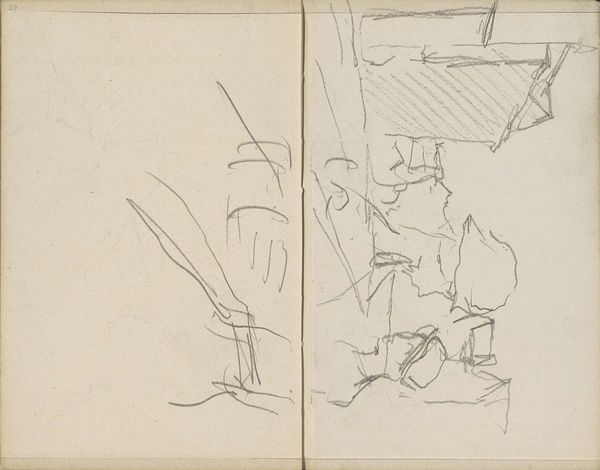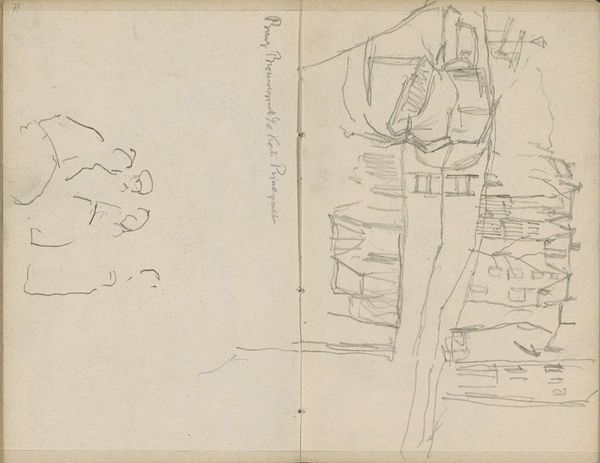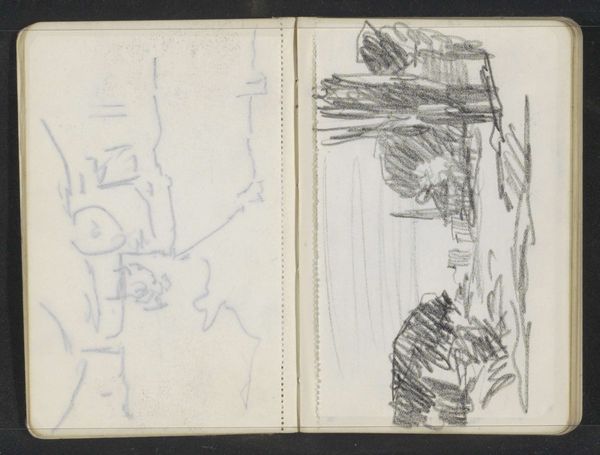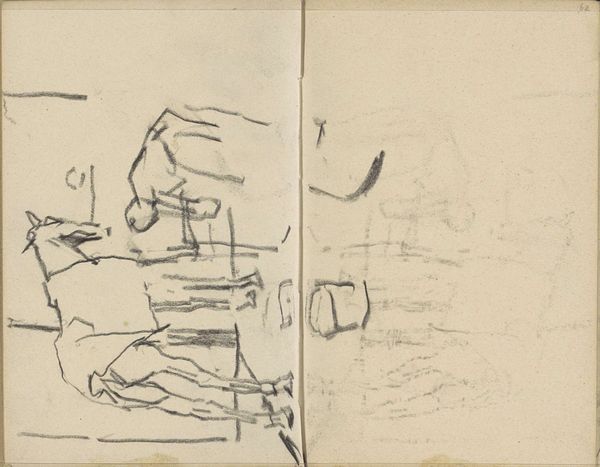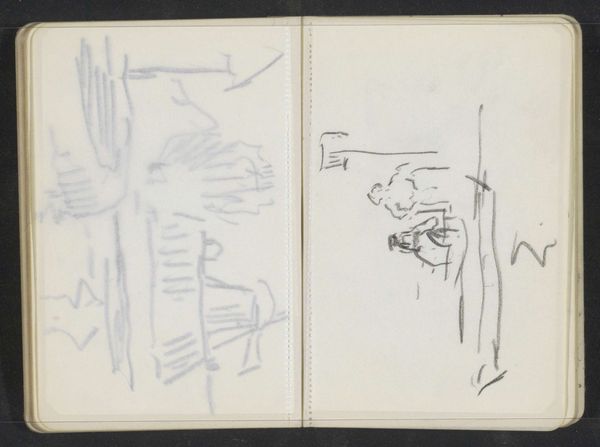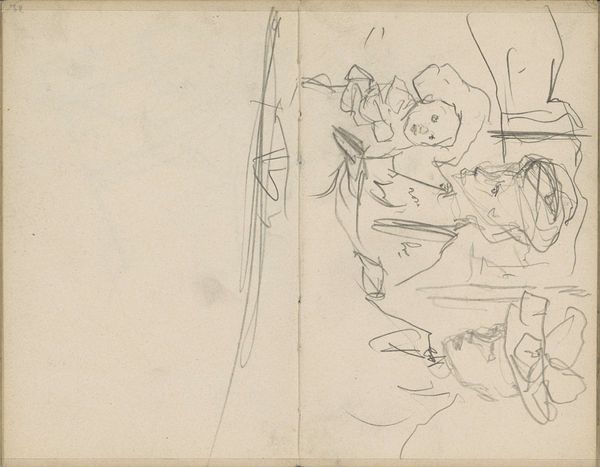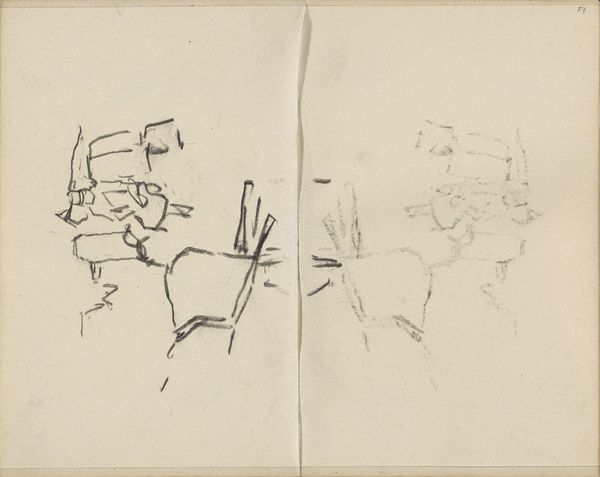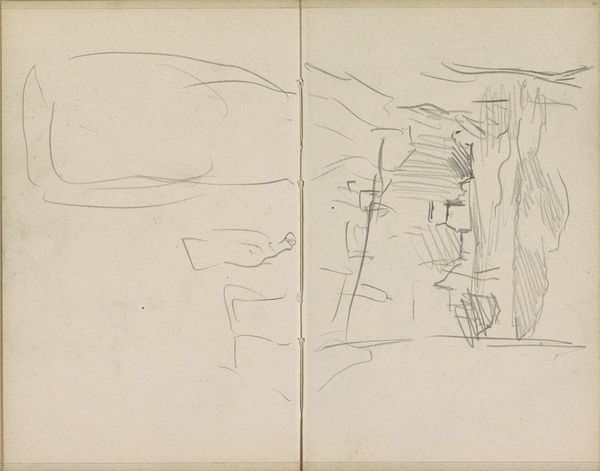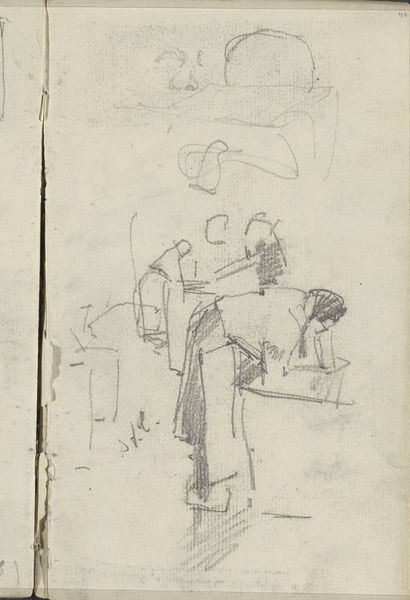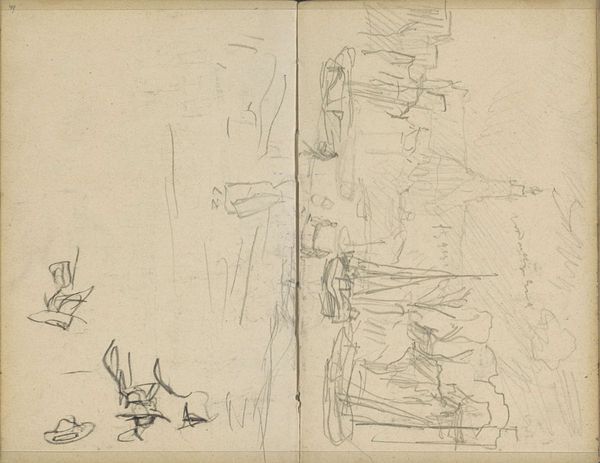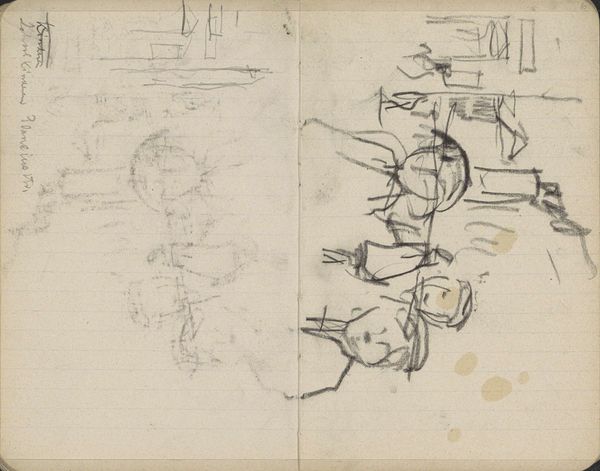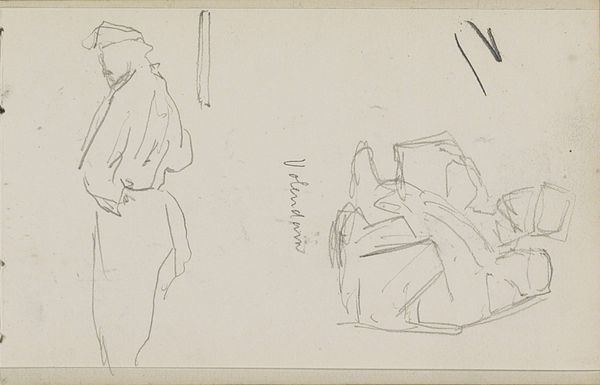
Hoefsmeden, mogelijk aan het Haarlemmerplein te Amsterdam 1912 - 1919
0:00
0:00
georgehendrikbreitner
Rijksmuseum
Copyright: Rijks Museum: Open Domain
Curator: Let’s take a moment to consider this evocative sketch by George Hendrik Breitner. He produced "Hoefsmeden, mogelijk aan het Haarlemmerplein te Amsterdam"—or 'Blacksmiths, Possibly at Haarlemmerplein in Amsterdam' sometime between 1912 and 1919. He used graphite and pen to depict this scene. Editor: Immediately, the sketch's raw, almost urgent energy strikes me. It feels like a fleeting glimpse into the lives of these laborers. The lines are so minimal, yet they capture a sense of movement and the gritty reality of the industrial landscape. There's a vulnerability to the subjects rendered so minimally on this stark white ground, as though representing the worker experience as one that is similarly 'blanked' out, even from public life. Curator: The lack of detail is very characteristic of Breitner, who saw himself as a street photographer with a pencil. It does read a bit like a photograph—or, perhaps better said, an instantaneous snapshot—captured of a gritty trade through minimal tools. He seemed less interested in idealized portrayals, preferring instead to capture fleeting moments of everyday life in Amsterdam. We can notice through Breitner's mark-making that the blacksmith was central to the image of the industrial, commercial city that had become synonymous with 'modern' life. Editor: Precisely, but the incomplete, sketch-like nature also evokes the ephemeral nature of labour and how rapidly work practices and working environments were developing with increasing acceleration and technological developments. It feels like it points to their precarious place in a rapidly changing city, the way capitalism demands constant productivity. Curator: Yes, the impressionistic nature of it certainly underscores a focus on immediate perception rather than permanence. The visible pentimento adds to the immediacy. What this allows, I think, is the capture of fleeting sensory data: of light and movement within a city rapidly transformed by both modernity and industry. The artist captures a temporal impression that the eye would otherwise register and instantly move past, something we would perhaps take for granted about cityscapes if not brought to our attention by artworks like these. Editor: Well, it has certainly reframed how I view the everyday industrial cityscape. The contrast between the dynamism of industry and its social erasure from public perception makes me see this type of artwork not merely as documentation but also as an accusation. Curator: It's a compelling reminder of art’s power to highlight societal change through an unvarnished lens.
Comments
No comments
Be the first to comment and join the conversation on the ultimate creative platform.


